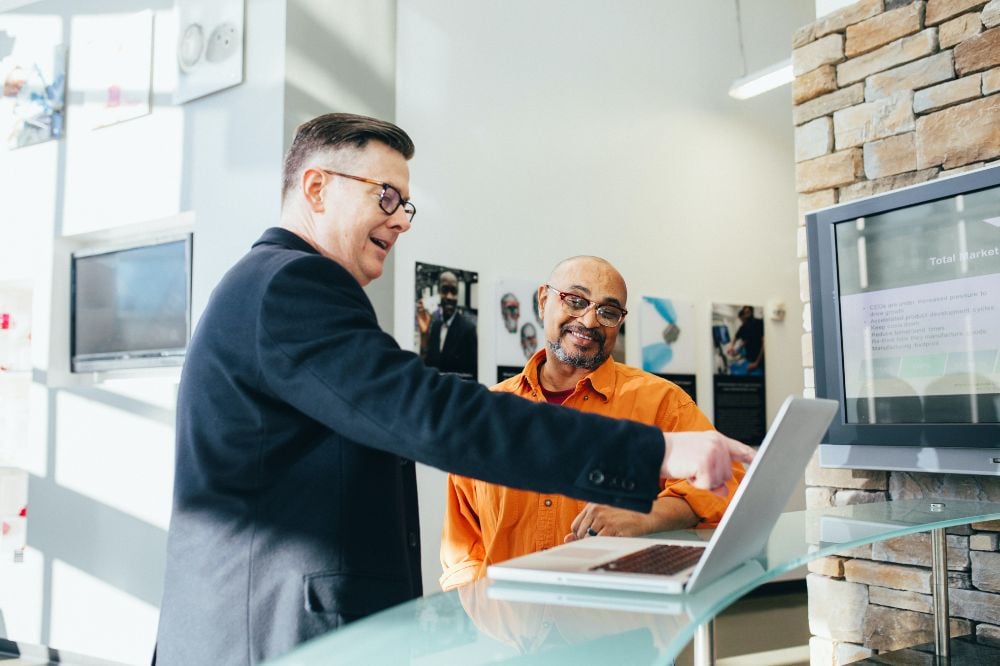Understanding The Travel Sales Funnel: Why Is It Important To Map Every Stage
Did you know that 48% of marketers have put a major focus on improving their sales funnels?
And for good reason. A well-thought-out travel sales funnel can help you provide a seamless customer journey.
From the moment a potential customer discovers your business, to the moment they book a tour, you need to make sure that you guide them on a journey that helps to boost sales.
If you don't carefully plan out your travel sales funnel, you’ll be blindly targeting prospects with marketing messages and tactics that might not be effective at all. With a well-planned funnel in place, you’ll be able to increase conversions and achieve a better marketing ROI.
In this guide, we’ll cover everything you need to know about creating an effective sales funnel for your travel business.
What is a travel sales funnel?
A sales funnel depicts the different stages of the buyers' journey. It refers to the different steps a potential customer goes through as they discover your business, engage with your brand, and ultimately, become a customer.
It’s called a funnel because the top stages are very broad and the bottom stages are much more narrowed down. Whenever a new prospect discovers your business, your job is to move them down your travel sales funnel until they become customers.
Each of the different sales funnel stages requires different marketing tactics and messages to cater to your potential customers’ interests and knowledge as they progress through the buying journey.
What are the different sales funnel stages?
From a broad perspective, your travel sales funnel can be broken down into four main stages.
1. Top of funnel
The top-of-funnel stage is the most broad-reaching. This is where new prospects will discover and first come into contact with your brand.
This stage is also called the awareness stage, and it’s where your business reaches the widest audience. People who enter the awareness stage have a low chance of converting, as they have only just discovered your business.
2. Middle of funnel
The middle of the funnel is also called the consideration stage. This is when prospects have discovered your business, and are learning more about what you do and what you can offer them.
Prospects at this stage are on their way to becoming customers, but there is still some work that needs to be done before they can get there. This section of the funnel includes most of the different stages of the buyers' journey.

3. Bottom of funnel
The bottom of your sales funnel is also called the decision stage. This is when you’ve really narrowed down your prospective customers, and it’s when they are ready to buy. The people in this stage are MQLs or SQLs.
Although it’s the smallest stage of the funnel, the bottom is the most critical, as this is where you drive conversions. And where all of your marketing efforts pay off.
4. After Purchase
Some sales funnel stages take a fourth stage into account. The after-purchase stage refers to how your business engages with existing customers after they have booked a tour. This stage is all about customer retention and generating brand loyalty (an after-sales service if you like).
Even though you have already converted the customer, it’s important to maintain a relationship with them. This helps you maximize the value from each customer that comes through your travel sales funnel.
Refining the Sales Funnel Stages
The stages above provide a broad representation of your travel sales funnel. However, the different sales funnel stages do tend to go into a lot more detail than this, with each specific stage involving a variety of actions and decisions the customer faces.
Here is a more detailed look at the travel sales funnel.
Discovery
This is the very top-of-funnel stage where a new prospect first discovers your brand. This could be because they searched for something that led them to your business (inbound marketing), or because you put out ads or outbound tactics that made potential customers discover your business.

Interest
Once a prospect has discovered your brand, the next step is to build up their interest in what you offer. This is achieved through informative marketing content.
Appraisal
Now the prospect starts comparing your travel business to other options and takes a more active approach to reach their buying decision.
Confirmation
The prospect is close to making a purchase, but they just need to ensure your travel business is the right choice. Content like case studies and conversion-focused landing pages are used here.
Conversion
This is the very bottom of the funnel, where the prospect actively makes a purchase and becomes a customer.
Each of these different sales funnel stages needs to work with each other and provide a seamless flow from one stage to the next in order for them to be successful.
Why is your travel sales funnel important?
A travel sales funnel clearly organizes the different stages of the customer journey and helps you apply more relevant marketing and sales tactics to each stage.
By mapping out this journey with a funnel, your travel business can simplify the customer journey and gain a better understanding of where each of your prospects is in terms of making a buying decision.
Establishing a travel sales funnel also helps with measurability. You can apply KPIs and metrics to each stage of the funnel, and easily see where your prospects are dropping off and where you can optimize your sales funnel for better results.

Most importantly, your travel sales funnel provides a clear path that your prospects take from discovering your business to becoming customers. You can't just send a brand new prospect straight to a sales page - they won’t convert. Instead, you need to warm these prospects up with the right content and information. Mapping out a sales funnel will help you do this more effectively.
This goes to show how your travel sales funnel is a pivotal factor in guiding and establishing your marketing strategy.
Tying your sales funnel to your buyer personas
When creating your travel sales funnel, it’s essential that you map out every stage based on your travel business’ buyer personas. Each target audience segment you have is different, which means that each business segment will have a unique journey when going through your sales funnel.
Your job is to ensure each segment has a relevant and valuable experience in your sales funnel. Getting this right is necessary for boosting conversions across all of your different customer groups.
For example, a family looking to plan a vacation is likely to take more time in the planning stage; compared to a solo traveler who just wants to snatch up a good deal. This means that you should create relevant content and messaging to help the family plan their trip. You should also have relevant content to help the solo traveler find the best deal and efficiently book it.
So, when you create your travel sales funnel, consider all of your different customer segments and the types of journeys they would have with your business. Then, ensure you offer relevant marketing content and use the right channels to engage these different audience segments during each stage of their journey.

This will likely involve a variety of different marketing channels, messages, automation, and tactics. By mapping these out in line with your different customer segments, these tactics will be more relevant. This will make them more impactful and effective.
Strategies to keep prospects moving through your travel sales funnel
Now that you understand the different steps involved in your travel sales funnel, using the right strategies can assist in moving prospects successfully through the stages.
This entails delivering the right kind of content. It should be interesting, engaging content that talks about the prospect’s pain points and questions at the specific stage of their journey.
Depending on the target audience, the tactics you use can look different for each business. Here are some of the best strategies to implement for optimal engagement.
Awareness Stage
As discussed, the awareness stage is all about attracting new customers and encouraging interest in your business in order to continue their journey through the funnel. Some of the best tactics for this stage are:
- SEO blog content
- YouTube videos
- Ebooks
- Podcasts
- Webinars
- Paid ads (search or social media)
- Social media content
Your ultimate goal should be to get them to progress to the next stage of your funnel - such as signing up for your newsletter.
Consideration Stage
The middle of the funnel is when prospects have already discovered your business, and now they want to learn more about what you do and why your travel business is useful.
Some of the best content for this stage includes:
- Newsletters
- Lead nurturing campaigns (drip campaigns)
- Blog content that goes deeper into your prospects' pain points
- Case studies
- Testimonials and reviews
At this stage, you’re inspiring prospects, building trust with them, and getting them ready to book their travel experience with your business.

Conversion Stage
Now your prospects should have all of the information they need to make a purchase. At this stage, your goal is to turn them into customers.
You can do this by continuing to share content like testimonials and reviews. Offering discounts or special offers can also be an excellent way to drive more conversions.
It’s also critical that you have a user-friendly travel booking experience for this specific stage. This is where you direct your prospects to your booking pages, so it is imperative that these pages offer a seamless experience.
Using a travel booking platform like WeTravel will help you optimize this process.
Retention
Once your prospects have converted into customers, you should make a concerted effort to maintain relationships with them.
Email marketing and social media are two excellent methods to achieve a good rapport. This is especially effective if your email campaigns are personalized to your past customers.
Using a reputable CRM system will help you manage and understand your customers more effectively. This is important for targeting them with relevant content.
Conclusion
Understanding the importance of the travel sales funnel and how the different stages work is paramount for optimal conversion rates.
Tie this into your target customer personas, and you’ll be able to provide a far more effective journey for each prospect that comes into contact with your business.
Get this right, and it will mean more tours booked with less effort. The better you understand your travel sales funnel, the more successful your travel business can become.
New resources, straight to your inbox
We’re committed to your privacy. WeTravel uses the information you provide to us to contact you about our relevant content, products, and services. You may unsubscribe at any time.




